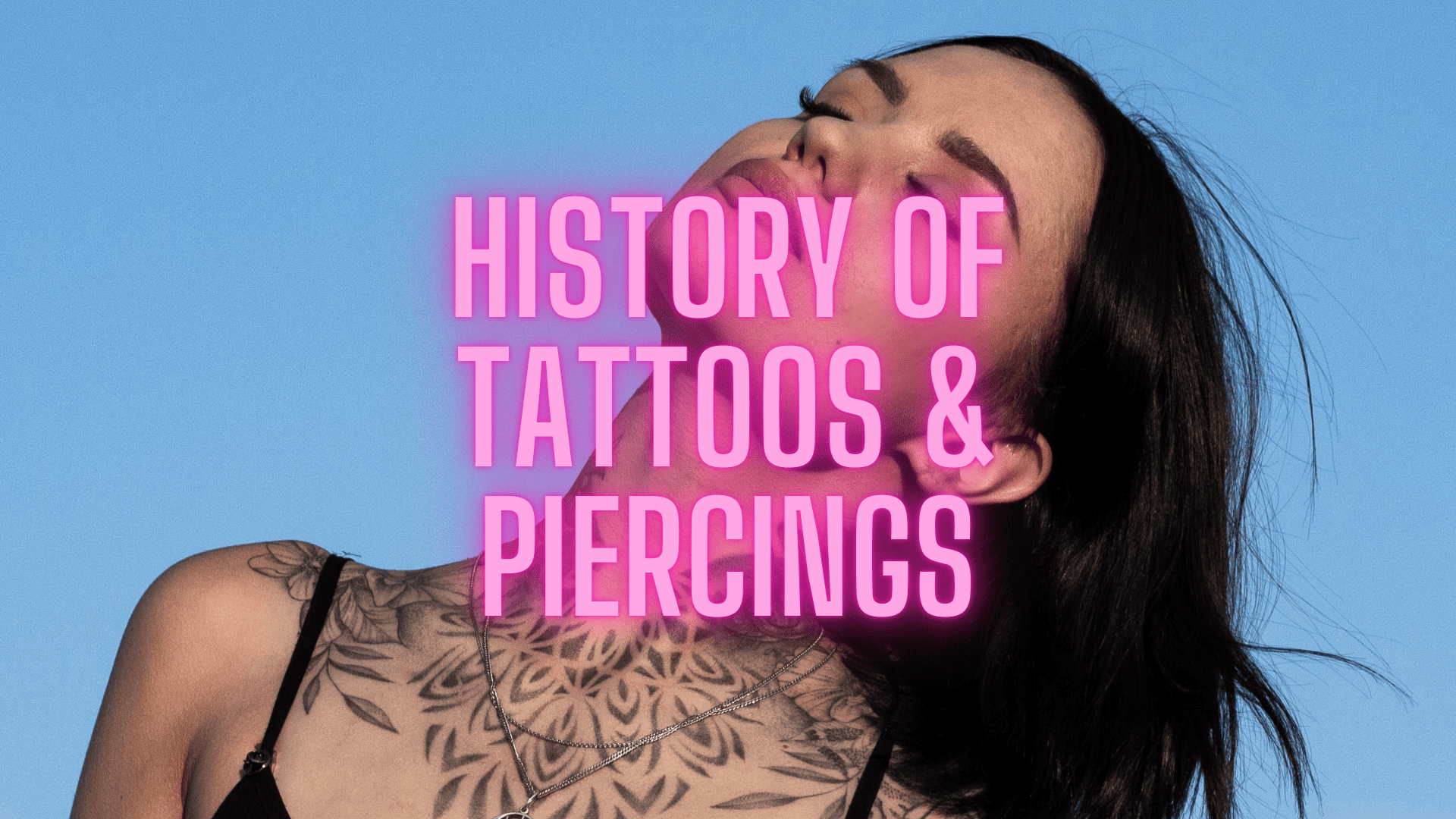Generation Black TV - Live
Tattoos and Piercings: Their Origins and What They Represent Today
Tattoos and Piercings: Their Origins and What They Represent Today
[simple-author-box]

It’s still uncertain just how old tattooing and piercing is, though it is common knowledge that they are a form of ancient body artwork and modification that have been performed for thousands of years, and historically speaking, often had a religious and spiritual importance.
So far, the oldest evidence of human tattooing is estimated to date back to between 3370 BC and 3100 BC. Otzi the Iceman, is a recent example, and was discovered in September 1991. Due to the icy conditions of the Otzal Alps, his body was naturally preserved, making him the oldest mummy in Europe found yet.
What was interesting about the find was that Otzi’s body had a total of 61 tattoos, with the majority of them inked onto his legs. This was one of the first, best preserved examples of tattooing in ancient Europe. Although an important discovery, there are approximately over 49 different cultures and locations around the world where we can find evidence of tattooed mummies and preserved bodies.
Locations where tattooing has been found on human remains include Alaska, Mongolia, Greenland, Egypt, China, Sudan, Russia, and the Philippines. Other locations are also known for tattooing, such as the (indigenous) Americas, Australia and New Zealand. However, tattooed remains of these peoples are less commonly found, and thus the knowledge has been passed down via word of mouth or history written by colonisers.
Whilst tattoos and piercings were greatly honoured and celebrated in many ancient civilisations, body modifications in ancient China and Eastern Asia were seen as barbaric and were highly stigmatised.
This is not too dissimilar to the white Christian view that developed during the Empirical periods, where tattooed indigenous people were considered barbarians and uncivilised because they bore tattoos. Ancient Chinese folk tales talk of heroes and bandits with tattoos, and convicted criminals were often branded with tattoos on their face to show that they could not be trusted.

Photo by Amer Aryaei
The most famous example amongst academics, is Samoa and its rich history of tattooing. The modern English word “tattoo” most likely originated from the Samoan word “tatau”. Once completed, Samoan tattoos represent dedication to the culture and great endurance.
As the process is often weeks long, they are extremely painful to receive, and they come with a high risk of infection. Those who are unable to tolerate the pain are branded with a permanent mark of shame.
In western society, tattoos and body modifications were not common or socially acceptable until the mid-20th century. Ancient peoples who inhabited the British Isles thousands of years ago, such as the Celts, were famed for their detailed body art and tattoos, but since the Roman invasion of 55 BC, tattooing wasn’t a cultural product found in the UK again until the present day.
In Victorian times, tattoos and piercings were only found within certain groups, such as performers and those within the entertainment industry, and fully tattooed individuals became attractions themselves. In the 1920s, cosmetic tattoos became popular amongst middle-class women. Popular makeup trends were often tattooed onto their faces as a type of “permanent makeup”, as many makeup products were too expensive to buy, even for the elite.
Common makeup tattoos included tattooed eyebrows and lip liner. This changed society’s view of women and femininity gradually, accepting that women wanted and got tattoos, even if at the time, they differed from what men would get.
This is particularly unknown however, because tattoos were still heavily stigmatised. Anyone with ink on their skin or a piercing other than the earlobes was considered unfeminine, and most women with tattooed makeup kept it a secret.
So, what does this mean for tattoos and piercings today? It wasn’t until the 1970s that body mods became more mainstream and socially acceptable, and since then, more and more people have been getting inked and pierced. Whilst there is still definitely a stigma surrounding tattoos and piercings, it isn’t uncommon for people to have them now.

Photo by ziphaus
In the 70s, 80s and 90s, tattoos were still predominantly reserved for those within alternative subcultures, such as metalheads and rockers. Punk and emo made gauges and stretchers more popular, as well as septum, nostril, and lip piercings.
The 2000s, particularly the 2010s, saw a big rise in the number of people getting tattooed and pierced, even if they weren’t part of a particular subculture or interested in alternative music.
Tattoos have become and are increasingly becoming, much more “normal”, especially amongst young people. Even if the heavily tattooed and pierced look isn’t seen every single day, small tattoos and subtle piercings are common, particularly those on the fingers or behind the ears.
Delicate helix and cartilage piercings are popular amongst young women, often matching jewellery as a dainty show of self-expression. Tattoos and piercings are now finally seen, by some, as pretty and feminine, as well as bold and masculine. The range in tattooing and body modifications has expanded so vastly that now almost anything is possible, creating even more of a cause for people to get them.
For me personally, tattoos and piercings represent freedom and individuality. Although more socially acceptable, tattoos especially, are still stigmatised and disliked by many, especially those with more conservative views on identity and self-expression.
Body art, just like makeup, gives us the tools to express ourselves in beautiful, artistic ways. For many, tattoos are a symbol of identity – something integral and deeply special about each of us. For those of us in marginalised social groups, tattooing can be a way to recognise one another, or serve as a permanent reminder of our inner strength when life has become especially tough.
Whether you’re getting a tattoo of your astrological sign or of something to represent your cultural and ethnic background, tattoos and piercings are often important to people, and hold significance.
Some get them simply because they can, because they are trendy and more popular, and, although this might take away the meaning of special tatts and body mods for some people, it isn’t really hurting anyone at the end of the day.
I think tattoos and piercings represent liberation from a past of colonisation and laws against those within society who deserve the most protection, or are at least a step in the right direction. They help bring us together; a quiet rebellion if you will.


